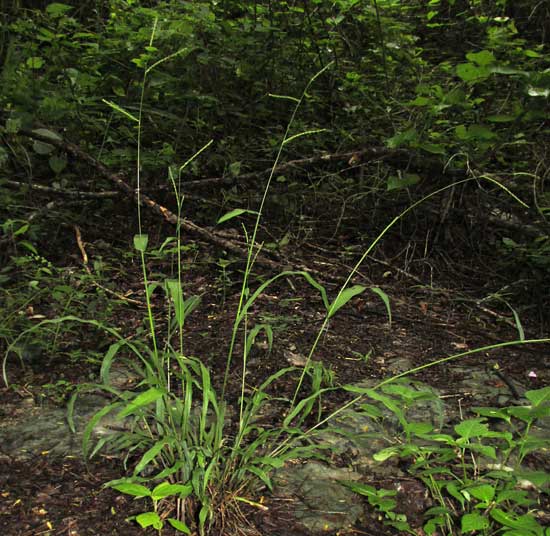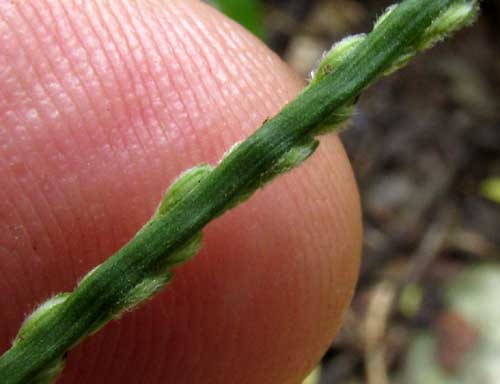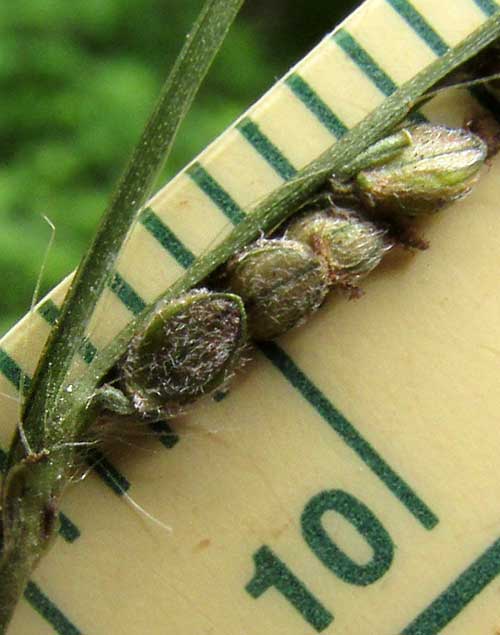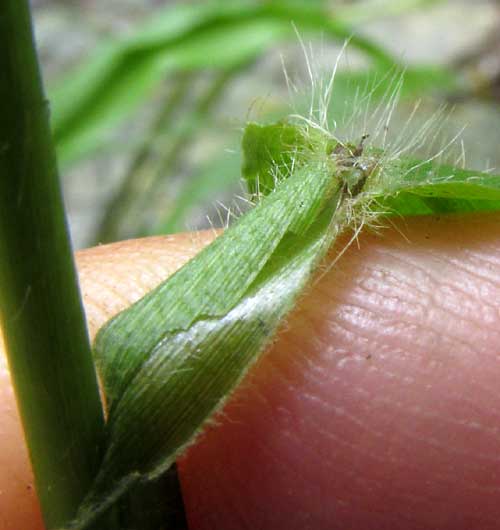Excerpts from Jim Conrad's
Naturalist Newsletter
from the August 28, 2016 Newsletter issued from Hacienda Chichen Resort beside Chichén Itzá Ruins; limestone bedrock; elevation ~39m (~128ft), N20.675°, W88.569°; central Yucatán state, MÉXICO
BLUE CROWNGRASS
On very thin soil atop limestone bedrock, on a shadowy trail through the woods at Hacienda Chichen, a grass was at its flowering peak. The trail at that point was so dark a flash was need to get the picture shown below:

Even at a distance you can see that this is one of those grasses that arranges its spikelets on narrow spikes or spike-like racemes atop the stem, like crabgrass and Bermuda grass. Up close, we see that, also like them, the florets are aligned along only one side of the flattened secondary inflorescence branches, or rachillas, as shown below:

Even closer, we see that each spikelet is only about 2mm long (0.08inch), consists of only one floret, is broadly oval, and that the coverings of the grains are hairy and bear three prominent veins on their flat sides, as seen below:

In grass identification it's important to notice the ligule -- the wall-like structure where the blade meets the stem, and which can take any number of forms, when it's present at all -- and that's shown below:

There we're seeing the ligule consisting of two dark, papery, ear-like appendages surrounded by long, stiff, white hairs.
These features and others lead us to the genus Paspalum. Over 20 Paspalum species are listed for the Yucatan Peninsula. Using technical keys and comparing our pictures with those on the Internet -- not the best approach but what we have here -- it looks like this is PASPALUM CAESPITOSUM, which at least the USDA calls Blue Crowngrass. It's native from Texas and Florida south through Mexico into Central America, and the Caribbean areas. In the Yucatan it's a roadside weed that also appears in disturbed areas. Any small, seed-eating bird will be glad to peck at the species' plump grains.